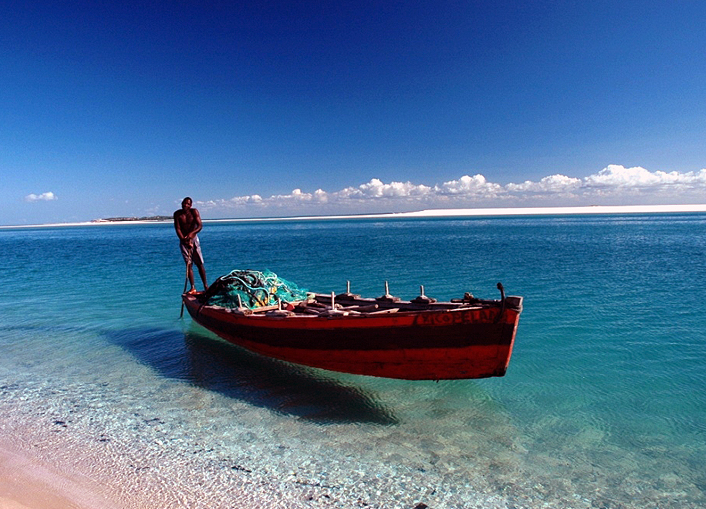
Mozambique is a country in southeast Africa that is known for its stunning beaches, rich culture, and unique wildlife. Despite its popularity as a travel destination, there are still many little-known secrets about Mozambique that are fascinating and worth exploring. In this article, we will delve into some of these hidden gems and unveil some of the most interesting things about this diverse and vibrant country.
- The Island of Mozambique
One of the most fascinating places to visit in Mozambique is the Island of Mozambique. This small island, located off the northern coast of the country, is a UNESCO World Heritage Site and was once the capital of Portuguese East Africa. The island is home to a number of historical sites, including the Fort of São Sebastião, which was built in the 16th century to defend against invaders. The island also has a unique mix of African and Portuguese architecture and culture, making it a truly unique destination.
- The Quirimbas Archipelago
The Quirimbas Archipelago is a group of 32 islands off the coast of northern Mozambique that are relatively unknown to tourists. The archipelago is known for its stunning coral reefs and diverse marine life, including dolphins, turtles, and whale sharks. Visitors to the Quirimbas can also explore historic sites such as the 18th-century Portuguese fort on Ibo Island or the ruins of the ancient trading city of Kilwa Kisiwani on Quirimba Island.
- The Niassa Reserve
The Niassa Reserve is one of the largest protected areas in Mozambique and is home to a wide range of wildlife, including elephants, lions, leopards, and more. The reserve is also home to a number of traditional communities who have lived in the area for centuries. Visitors to the reserve can experience traditional dances and music and learn about the local way of life.
- The Gorongosa National Park
The Gorongosa National Park is another must-see destination for wildlife enthusiasts. This park, located in central Mozambique, was once one of the most biodiverse places on the planet. However, it was devastated by civil war in the 1980s and 1990s. In recent years, the park has been undergoing a major restoration effort, and visitors can now see many of the park’s iconic species, including lions, elephants, and buffalo.
- Mozambique’s Rich Cultural Heritage
Mozambique has a rich cultural heritage that is influenced by a variety of factors, including its history as a Portuguese colony and its location at the crossroads of several trade routes. The country is home to a wide range of cultural traditions, including music, dance, and art. The Makonde people, for example, are known for their intricate wood carvings, while the Chopi people are known for their vibrant music and dance.
- The Portuguese Influence
Mozambique was a Portuguese colony for nearly 500 years, and this influence is still evident in many aspects of the country’s culture and architecture. The colonial legacy can be seen in the country’s language, food, and religion. Visitors to Mozambique can explore historic colonial buildings and churches, including the Cathedral of Our Lady of the Immaculate Conception in Maputo, which was built in the early 20th century.
- Mozambique’s Unique Cuisine
Mozambique has a unique cuisine that is influenced by both African and Portuguese traditions. Seafood is a major part of the country’s diet, with dishes such as grilled prawns, peri-peri chicken, and matapa (a stew made with cassava leaves and peanuts) being popular. Mozambique is also known for its beer, with 2M and Laurentina being the most popular brands.
- Mozambique’s Dance Culture
Dance is a significant part of Mozambique’s cultural heritage, with a variety of traditional styles practiced throughout the country. One of the most popular styles is marrabenta, which originated in the 1930s and is characterized by its energetic, rhythmic guitar riffs and percussion. Other styles include zouk, kizomba, and Afro-pop.
- The Traditional Dhow Boat
The dhow is a traditional sailing vessel that has been used by fishermen and traders in Mozambique for centuries. These boats have a distinctive triangular sail and are often made from locally sourced materials such as mango wood and coconut fibers. Visitors to Mozambique can take a dhow safari along the coast, exploring hidden coves and pristine beaches.
- Mozambique’s Coffee Culture
Mozambique is known for its coffee, which is grown in the northwestern region of the country. The coffee beans are grown at high elevations and have a unique flavor profile, with hints of chocolate and fruit. Visitors can sample local coffee at cafes and markets throughout the country.
- The Venetian-Gothic Style of Architecture
One of the most interesting aspects of Mozambique’s architecture is the Venetian-Gothic style that can be seen in many of its colonial buildings. This style is characterized by its intricate stonework, ornate windows, and intricate wrought-iron balconies. The Central Railway Station in Maputo is a prime example of this style, with its elegant facade and clock tower.
- Mozambique’s Art Scene
Mozambique has a vibrant art scene, with a variety of styles and mediums represented. Many artists draw inspiration from the country’s cultural heritage, using traditional materials and techniques to create contemporary works. Visitors can explore galleries and studios throughout the country, including the Núcleo de Arte in Maputo, which is one of the oldest and most prestigious art centers in Mozambique.
- Mozambique’s Coral Reefs
Mozambique is home to some of the world’s most pristine coral reefs, which are teeming with marine life. The reefs are particularly impressive in the Bazaruto Archipelago, where visitors can snorkel or dive among colorful fish, turtles, and rays. The reefs are also an important habitat for dugongs, which are rare and endangered marine mammals.
- The Zambezi River
The Zambezi River is one of the most important waterways in Africa, flowing through six countries before emptying into the Indian Ocean. In Mozambique, the river is particularly important for fishing and transportation, with many traditional communities living along its banks. Visitors can take a river safari or go fishing for tigerfish or catfish in the waters of the Zambezi.
In conclusion, Mozambique is a fascinating and diverse country with many hidden gems and little-known secrets waiting to be discovered. From its rich cultural heritage to its stunning wildlife and pristine coral reefs, there is something for everyone in this unique and vibrant destination. Whether you are an adventurous traveler, a wildlife enthusiast, or a culture vulture, Mozambique is sure to surprise and delight.



